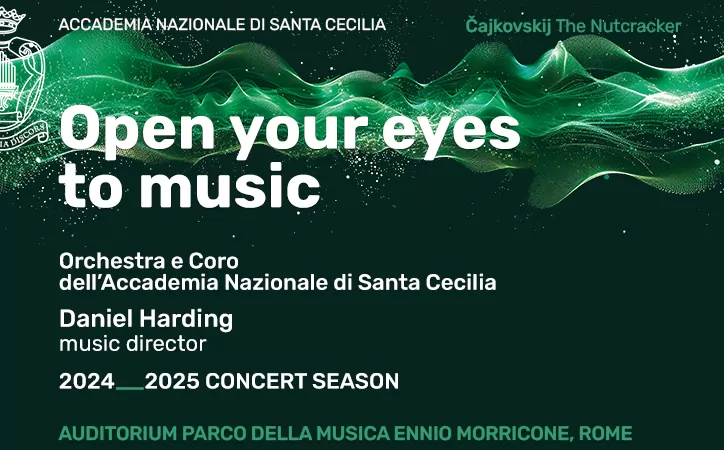Teatro Olimpico reopens after restoration.
The Teatro Olimpico in the Flaminio area of Rome reopened in November after six months restoration. The inaugural event, a performance of Pasiones Tango y musical, marked the start of a new chapter in the history of the theatre home to one of Romes oldest musical institutions, the Accademia Filarmonica Romana.
This is the second restoration of the theatre, which was built in the 1930s in the rationalist style of architecture, without ornament and of deliberately linear and symmetrical design. Much work was carried out on the theatre throughout the 1980s and 1990s to make it more functional such as the modernisation of the stage, the introduction of facilities for disabled people and the installation of a refreshments bar. These changes altered the spatial unity and hid many of the original architectural features of the building.
The theatre has now been returned to the lines of the original project by a team of four architects, Francesca Argentero, Barbara Deledda, Carlotta Montefoschi and Martina Murzi. The work included the removal of a false ceiling in the foyer and the opening of tall windows in the bar at the side of the theatre, which give magnificent views onto the Villa Madama across the river on Monte Mario. New lighting has been installed and parquet-flooring replaces fitted carpeting in the auditorium. The theatre has been decorated in black, grey and white, with the upholstery for the 1,400 seats in grey. The only splash of colour is the stage curtain, which remains the traditional red.
The affiliation between the Filarmonica and the Teatro Olimpico began in 1980, but the former has a history which goes back much further than that of the theatre with which it is associated. The musical institution was founded in 1821 by members of Romes noble families who wanted to listen to lyrical opera in concert form, as well as to less familiar musical works. It performed Rossinis William Tell and Donizettis Lucrezia Borgia before being closed by the papal authorities in 1860 for being too liberal.
It reopened again in 1870 and in 1915 acquired the Sala Sgambati in Via di Ripetta as the main location for its concerts, hosting numerous prestigious soloists and European ensembles. However, the Filarmonica lost its location in 1936 when the fascist regime demolished the Sala Sgambati and the auditorium of Augustus, which hosted the concerts of the Accademia di S. Cecilia, to make way for what is now Piazza Augusto Imperatore. The Filarmonica then became an itinerant institution, performing in different locations around the city such as in the Teatro Eliseo in Via Nazionale until 1943, when activities were suspended during the Nazi occupation.
A turning point in the fortunes of the institution came when Adriana Panni became president in 1973 (staying until her death in 1994). As well as initiating the collaboration with big-name artists such as Stravinsky, Panni secured the Casine Vagnuzzi in Via Flaminia for its administrative offices and then oversaw the acquisition of the Teatro Olimpico in 1980.
The Filarmonica had been looking for a permanent location and, as the Teatro Olimpico was set to become either a parking lot or a supermarket, Panni rallied people together, formed the Societ per Azioni per lacquisto del Teatro Olimpico and saved the theatre. It then became the permanent home for the Accademia Filarmonica Romana concerts.
Today the theatre is an autonomous body run by a company called Societ Teatro Olimpico Spa, but the Filarmonica is still a shareholder; the two are very much linked but are by no means synonymous. For example, the Societ Teatro Olimpico took on the job of finding sponsors for the restoration project; most funding came from the Lazio region, although some did come from the shareholders such as the Filarmonica. A separate body, which runs the Filarmonicas artistic programme, rents the space from the Teatro Olimpico for the associations events.
The Filarmonica has a very varied programme, inviting world-class artists to perform throughout its season. It consists mainly of chamber music ensembles (the main season is baroque) but also regularly features ballet both classical and contemporary operetta and marionette shows. The association also has three choirs.
Its administrative offices are still in the Casine Vagnuzzi in Via Flaminia, in the gardens of which is the Sala Cassella, a 200-seat concert hall, which has its own programme running parallel to that in the Teatro Olimpico. The Sala Cassella also hosts the Filarmonicas yearly summer music festival Pianoforte al Chiaro di Luna with its doors open onto the gardens.
As well as the Filarmonicas season, the Teatro Olimpico has a separate and extremely varied programme, with musicals (Grease), dance (Stomp) and stand-up comedians. As the theatre with the best stage for dance in the city deep, wide and cavernous it is the prime location for big ballet companies; visiting dancers have included Mikhail Baryshnikov, Carolyn Carlson and la Fura del Baus a Spanish dance company that uses special effects such as water and smoke, which the Teatro Olimpico is able to provide.
The original idea of the theatre in the 1930s was for it to be a multifunctional venue for theatre and operetta, and in the aftermath of world war two it was used as a cinema as well. Orson Welles once said that the Teatro Olimpico was the only place in Rome that bore any similarity to the atmosphere of the Broadway theatres; the continuation of its eclectic programme reflects this tradition.
Teatro Olimpico, Piazza Gentile di Fabriano 17, Rome, tel. 063265991.
www.teatroolimpico.it or www.filarmonicaromana.org.

















